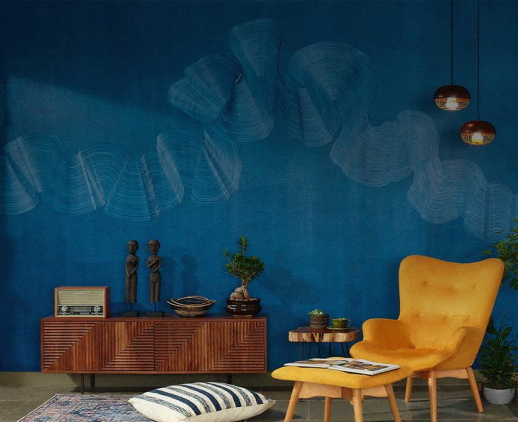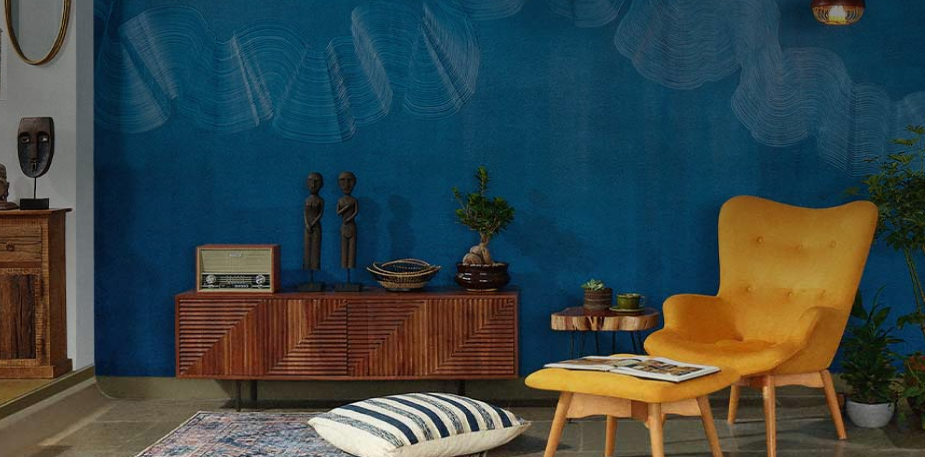Get your home interior design budget estimate
What is the future of homes post Covid-19?

They say it takes 21 days to form a habit and India has been under lockdown for thrice that period of time. That’s enough time for those fortunate to have a home and means to survive to have analysed every corner of their residence—and formed a plan for what needs to change.
Architects and interiors designers believe that future and existing homeowners will look at their prospective and current residences with a new perspective, having survived many days stuck indoors. In this time, they would have realised what they missed most, contingency measures they need and how to be prepared if such an unlikely situation were to recur.
“We already have calls from two clients, both ongoing projects, where they want to include home offices,” says Shabnam Gupta, who runs the design firm The Orange Lane in Mumbai.
“Much more than climate change, these (events) impact architecture,” says Madhav Raman, principal and co-founder of Delhi-based Anagram Architects. “That’s the only reason why we must think immediately about the impact. Pandemics change how space is allocated and gets new typology.”
There is a reason why this is a disruptive moment in space design, says Raman. Whenever there has been a pandemic (anywhere in the world), it has resulted in changes in design features, on the back of public health. Right from the plague (in England) in the 1600s, which brought focus to sanitation, public health awareness allowed for heating and cooling of homes. The great fires of London and Chicago set the tone for stone and brick to replace wood as a material for construction. The development of the germ theory in the late 19th century brought attention to indoor air quality, ventilation and hygiene. Powder rooms were created near the front door so that visitors did not go into the house, for example.
And it is quite likely that Covid-19 too will catalyse some modifications to residential architecture and design in the future.
Open space will become more important than floor space
The lockdown has reinforced the need for open or outdoor-like spaces indoors. Whether this is a balcony or a porch or a courtyard, an area to access sunlight and open air has become an imperative—not necessarily just to bang on plates or to light candles.
People have craved for an outing and the closest they have been able to visualise it is by peeking out of large windows (if possible) and parking themselves in the balcony (if available). Recent medical studies have indicated that people deficient in Vitamin D are more susceptible to the novel Coronovirus, further illuminating the need for sunlight.
“We had courtyards for air circulation and for sanitary purposes,” says Gowri Adappa, co-founder of the Chennai-based A Design Co. “That cleanses your space. A lot of people feel outdoor spaces are not necessary but are now going to be careful and will use sit-outs.” Bungalow and villa owners would also perhaps build smaller houses and leave more space around for a garden or even a backyard. Those with abundant land may consider a central courtyard, like old houses in southern India. People, especially in a place like Mumbai, will think twice about enclosing the balcony.
Light and calming colours will be more popular
Coloured walls are already a thing of past, replaced with neutral shades and whites. People need calming colours, so they can spend longer hours at home without feeling anxious.

Allocating an area in your house for an open or outdoor-like space will help you access sunlight and open air in a lockdown situation. Photography by Prachi Damle
“I love using black,” says Adappa, adding a counter view to an accepted adage. “As much as people think it makes a room smaller, I feel it expands the space.
Pankhuri Goel, design principal at Delhi’s Studio Lotus, also suggests light furnishings with bright, colourful linen and cushions in the living room for a renewed appreciation for spaces one might otherwise take for granted, while also embracing the idea of “conscious living”.

The right amount of lighting and materials that provide acoustic insulation will be needed to create home offices that minimise distraction as well as aid in a possible video call. Photography by Neville Sukhia
Homes will also have to include an office space
What might definitely become a requirement in the future is a home office—not just a study—a space where meetings can be held, clients can be invited, with access to office equipment like printers and, to stretch a wish list, a coffee machine. “We, as people, used to have a home and an office avatar,” adds Raman. “Earlier, there was no privacy within the home. Now, family time may also be work time.” “Since our homes have assumed the role of multi-functional spaces—the lines between work and home have blurred,” says Goel. “From remote working and ‘quarantine cooking’ to practising yoga and tending to plants, we are in the process of redefining how we have so far inhabited and interacted with our homes.” So materials that provide acoustic insulation will be needed to create home offices that minimise distraction, she adds. Lighting in homes would have to be designed based also on getting the right framing—in case of a Zoom meeting.
Multi-use furniture will allow for efficient space allocation
A study instead of dresser is a clever way of incorporating workspace, says Adappa, advocating multiple use furniture pieces. The table top can host the laptop while a mirror above can make it a dresser.
“Now, we have learnt to be self-sufficient,” she adds. “Like having user-friendly kitchens because home owners, not just house staff, will also use the utilities. Now, as a world, we will do a lot of work from home.”
Budget will be on everyone’s mind
With businesses and the economy down, with pay cuts and job losses looming, clients would also become more sensitive to budgets—at least in the short-term. Using furniture for dual purposes or smart ways, like Adappa suggests, would be more cost effective.
“Warm and earthy materials” like timber and cane have a distinct aesthetic character, says Goel. “They not only age gracefully but also retain their strength. At the same time, celebrating local materials, which are more accessible, will be essential to suit economic and environmental interests.”
Home tech will take over
Already, modern homes rely substantially on technology—and not just the Alexa kind. Touch-free doors, lights, taps etc. may become a norm, particularly in places that host people and parties, but want to maintain a certain degree of hygiene. The now forgotten letterbox could become a self-sanitising pick-up box for home deliveries.
Maybe the number of doors in the house would reduce, allowing for other ways of maintaining privacy, like air curtains that give visual instead of audio separations.
“You may have people with interactive art, projectors, motion sensors etc. They may become the new luxury—experience based not object-based things. I am not afraid of robots taking over because they don’t catch Covid,” says Raman, laughing.
Greenery indoors will allow for therapeutic living
“What you need is, like in some western countries, a mud room. We don’t have it in India. We need that back, after Covid, a space designated to clean up and sanitise,” adds Neha Rajora, a landscape architect from Ahmedabad, who has done some research on impact of visual connectivity to plants and stress level. “We can add plants to the house, which bring positivity. Not everyone can have a backyard or a garden.”
After this lockdown, Gupta believes people would want to make their home conducive to therapeutic living. “If you spending all day indoors, it gets depressing and you need positive energy,” says Rajora.

Using neutral and calming colours will help people spend longer hours at home without feeling anxious. Photography by Pulkit Sehgal
“Homeowners are becoming increasingly conscious of lowering their carbon footprint on the planet,” says Goel. “Inclusion of indoor plants, green walls, flower beds, etc. has a profound effect on occupant well-being.”
The future is a fertile ground for designers
The definition of a home itself has transformed in recent times—they mean different things to different people and not everyone aspires to 1-2-3 BHK. A home could be a hostel, a chawl or a large paying-guest system. Already, co-living, like co-working, is a concept.
“Instead of feeling depressed, we should be bouncing with enough to do to last our entire working life,” adds Raman. “It’s a fertile ground for all designers. We will come up with some funny, crazy things and capture people’s imagination.” Some like Adappa believe the future would be a juxtaposition of using older traditions and materials with technology, modern homes with traditional furniture.
“This has been a ‘wish I had…’ moment for many,” says Gupta, laughing. “People may, for example, want bigger bars in their homes.”

Get Started with your interior design journey with us!
Speak to our design professionals
What’s the status of your home possession?
What’s the condition of your home/space?
Will you be living in your space during the renovation?
 Previous Question
Previous Question
Is your interior design budget over 4 lakhs?
 Previous Question
Previous Question
Book next available appointment slots with our experts!
Please Select Date and Day
 Previous Question
Previous Question

Something went wrong!
We were unable to receive your details. Please try submitting them again.

Appointment Scheduled!
Thank you for giving an opportunity to Asian Paints Beautiful Homes Service! Our Customer Experience Specialist will get in touch with you soon.
Appointment Date & time
Thank You!
Our team will contact you for further details.
What’s the status of your home possession?
What’s the condition of your home/space?
Will you be living in your space during the renovation ?
 Previous Question
Previous Question
Is your interior design budget over 4 lakhs?
 Previous Question
Previous Question
Book next available appointment slots with our experts!
DEC 2023
Please Select Date and Day
 Previous Question
Previous Question

Something went wrong!
We were unable to receive your details. Please try submitting them again.

Appointment Scheduled!
Thank you for giving an opportunity to Asian Paints Beautiful Homes Service! Our Customer Experience Specialist will get in touch with you soon.
Appointment Date & time
17 Oct 23, 03.00PM - 04.00PM





































